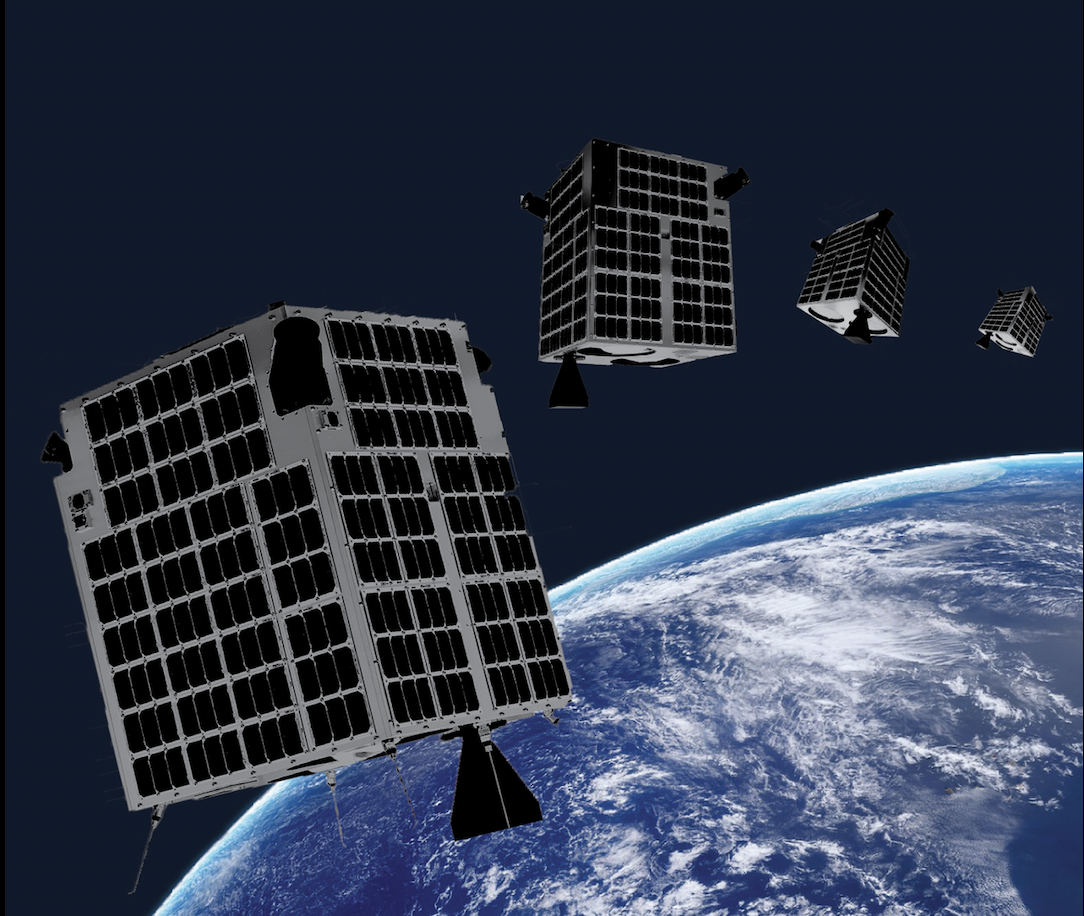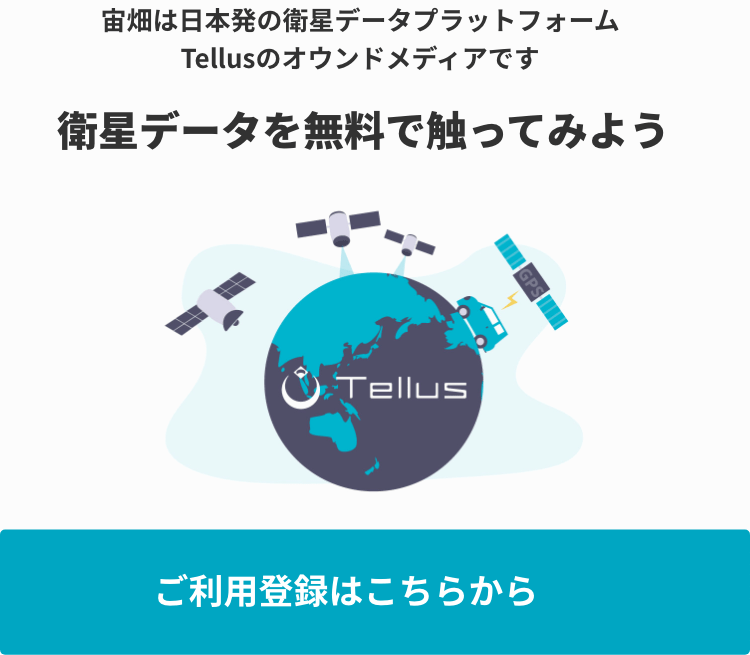Axelspace’s Challenge: A satellite capturing Earth and Space [Understanding Space Situational Awareness (SSA)]
Axelspace has announced a partnership with two companies, HEO Robotics and NorthStar Earth & Space, to provide observational data for their respective SSA (Space Situational Awareness) services. We spoke with the CEOs of each company to learn more.
As more and more satellites traverse space, a pressing need emerges for “Space Situational Awareness” to ensure safe usage of space, by monitoring space objects and debris in orbit. In this series, we will interview individuals and companies in the field of Space Situational Awareness (SSA), aiming to explore global trends. Our first theme of this series is “Using Earth Observation Satellites to monitor space situations.”
Axelspace, the trailblazer of commercial Japanese Earth observation satellite constellations, has formed a partnership with two visionary startups: HEO Robotics and NorthStar Earth & Space (Northstar) to provide observational data for their respective SSA Services.
While Axelspace’s observation services are mainly designated to monitor the state of the Earth, we delved into the envisioned business plans and the process of collaboration among companies in the field of SSA.
From Asteroid Business to Space Situational Awareness
In November 2022, Australian startup HEO Robotics announced their partnership with Axelspace. HEO Robotics provides a service called “HEO Inspect” that informs satellite operators about the status, operations, risks, and anomaly detection of satellites in orbit. Through this partnership, HEO Robotics gained access to the sensors of Axelspace’s GRUS satellites and as of November, HEO Robotics had access to 35 space-based sensors. By means of this, the functionality of HEO Inspect has been continuing to advance.

So, why did HEO Robotics decide to enter the SSA business? CEO Will Crowe was a doctoral student at the University of New South Wales in Australia, conducting research on estimating the mass of asteroids using multiple spacecraft. In 2016, while still pursuing his doctoral degree, he founded HEO Robotics with the aim of providing services to capture images of asteroids. At that time, several startups were announcing plans for mining resources on asteroids, and thus, gradually growing interest in asteroid exploration came from the business community.
However, Crowe and his team realised during their visits to customers in the United States that there was still no market for asteroid exploration and mining. And as they presented their business to a different target audience, they received feedback from Australian government officials, “What HEO Robotics is trying to do for asteroids could be useful for examining and understanding the status of satellites in orbit.” Taking these words as inspiration, HEO Robotics pivoted their business and entered the field of SSA.
Earth Observation Satellite to determine damage to other spacecraft
According to Crowe, the customers of HEO Inspect include government agencies such as the Australian Space Agency, defence and intelligence organisations, as well as private space companies. He emphasises that the primary need of the customer is to understand how spacecraft are changing in space.
“These changes in the spacecraft refer to whether or not there has been any form of damage on the spacecraft, or if it is performing unintended manoeuvres. It is also paramount for us to know the orientation of the spacecraft with respect to a certain reference frame, and the rate at which the attitude is changing. This allows us to assess whether the satellite can be recovered or if it is in safe mode.
Furthermore, through satellite observations, it is possible for us to determine if on-board equipment such as solar panels or antennas are deployed accordingly, and their status. All of these factors are crucial to our customers.”
When asked about the reasons for partnering with Axelspace, Crowe responded: “Because their satellites are fantastic!” In addition, HEO Robotics has partnered with Argentinian satellite Venture Satellogic and South Korea’s KARI (Korea Aerospace Research Institute). Crowe expressed his desire to partner with other companies, saying: “We would love to partner with any company that has a significant Earth observation constellation”
HEO Robotics utilises optical sensors to monitor the conditions of spacecraft in orbit and they also have plans to incorporate infrared sensors and ultraviolet sensors in the future.
Customer Needs: Accurate and Timely Alerts
In January 2023, Axelspace announced a partnership with NorthStar, a Canadian venture known as the first private company to enter the SSA (Space Situational Awareness) business. Through this collaboration, NorthStar also gained access to imaging data from Axelspace’s GRUS satellite.

NorthStar’s CEO, Stewart Bain, explains the customer needs in SSA services as follows: “What all our customers, including research institutions, private companies, military organisations, and governments, are seeking is one thing: precise and timely alerts when an object approaches their satellites. They want to predict where the object will go. And they want to obtain this information in a user-friendly format. It’s a service that answers questions like ‘Are there any threats today?’ or ‘Are there any threats I’m not aware of?'”
NorthStar’s focus on SSA began when Bain and his team started contemplating the challenges people faced before founding NorthStar between 2011 and 2012. At that time, with a relatively low number of satellite launches, concerns about the deteriorating space environment were not as widespread. Nevertheless, Bain mentioned that NorthStar decided to offer SSA services forecasting that the number of satellites to be launched was going to grow exponentially and the need to act fast in order to avoid the congestion of the space environment. When Mr Bain was young, the space environment was empty and the fact that has driven his operations has always been to preserve the space environment for next generations to they can leverage this valuable resource as we are doing nowadays.
That said, their journey hasn’t progressed exactly according to their initial plans. NorthStar had intended to build a large constellation of satellites equipped with both SSA and hyperspectral sensor capabilities. However, realising the substantial funding required for this project and the need for immediate action while not aggregating capital, they decided to separate the SSA and hyperspectral sensor businesses. Bain emphasises the importance of adaptation and a healthy sense of crisis for survival as a startup, stating, “To survive as a startup, you need to adapt and have a sound sense of crisis. You need to predict what’s happening and respond accordingly.”
NorthStar plans to launch its own SSA satellite in 2023 and combine the data provided by Axelspace to establish a robust observation system. Furthermore, they have plans to launch multiple hyperspectral satellites in 2026 and integrate its data with the SSA satellite data.
Axelspace Considering Full SSA Compatibility for Next-Generation Satellites
So, why did NorthStar and Axelspace decide to form a partnership?
When NorthStar was preparing to launch its SSA services, they began searching for existing sensors in orbit that had similar operating concepts. They narrowed down their options, taking into account sensor design and cooperative arrangements, and among the thousands of candidates, Axelspace’s GRUS satellite emerged as their top choice for collaboration.

When using Axelspace’s GRUS satellite for SSA purposes, there were indeed technical challenges. The sensor is typically oriented downward when observing the Earth’s surface, but acquiring data specifically for SSA requires tilting it at a 45-degree angle. This requirement poses various issues that need to be resolved. It is not something that can be immediately accepted upon receiving the request, and it presents several challenges that must be addressed.
Reflecting on the moment when they received the proposition from NorthStar, Axelspace described it as a “wonderful surprise” for a company that initially focused solely on Earth observation satellites. They stated, “It was truly surprising.” After receiving explanations from NorthStar’s technical team, they realised the potential of the collaboration. Subsequently, in October 2022, actual imaging using the GRUS satellite began.
Axelspace is also considering full SSA compatibility for their next-generation constellation, which they plan to launch in the future. The partnership with HEO Robotics and NorthStar is seen as a “great start” for Axelspace, according to their statements.


